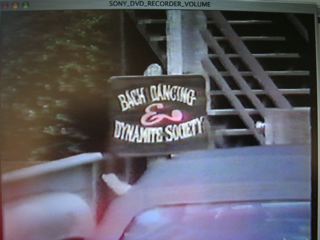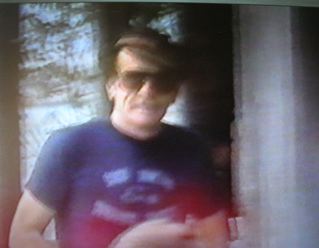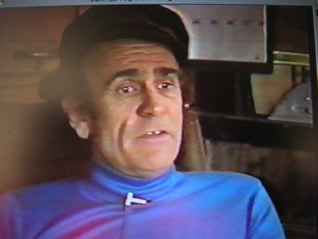In the 1970’s Santana’s, off Main Street and next door to the Half Moon Bay Inn was a popular Mexican restaurant. On any night of the week you were sure to see friends there.
Above: Long ago restaurant owner, Mr. Santana, gave me this colorful photo of himself. I’m happy to be able to use it now.
Devil’s Slide News
Birth of the Ebb Tide Cafe: Interview w/Pete Douglas Part 4 (1979)
June: And so then you ran it as a café.
Pete: For about a year after I got it. I was still working for the county probation department. I worked for about four years before I was canned on a technicality. I won’t get into the politics…So I was working…I was living a double life you know. I was going over the hill being a respectable official. Even wearing a button down collar.
But over here, you know, we were…the difference in my dress was the fact that I had tennis shoes on more often.
I guess it was around 1958—even though I was working we had to do this little business thing. You know, we were just going to have hamburgers and coffee and whatever. A sandwich shop needs a beer license. That was all I wanted was a beer license.
I was going to bring the matter up to the probation department. And there is no law against a probation officer having a booze license as there is for police officers, by the way. No law against it.
Right away they got all upset over there—invented policy to say I couldn’t have one.
None the less we opened up. We made good hamburgers….
We just opened as a social thing, that’s all, no money in it. We ran it for about a year, a year-and-a-half, weekends only
We gradually met some people and they became my friends. Speaking of some of the early hanger-outers, there’s some still on the coast, one of them, Bill Bragg, do you know him?
June: Not sure.
Pete: Bill Bragg and his wife, Jackie. There were other couples like that. I won’t get into that. But that’s all it ended up being—they always knew they could fall in on the weekends, we were open, so to speak.
There were constant parties, lots of parties.
About that time, early 1959, I was a probation officers and I got a guy referred to me, his name was Pat Briggs. He got busted for stealing baloney in a supermarket.
At that time we only handled felony cases—but I got him and he was only 19-years-old. He was going to San Mateo College. When I was interviewing him and laughing at the police report, about stealing baloney and wondering why he was even here. I asked him what his interests were. He did play saxophone and he was being very straight with me.
I said, ‘Oh, yeah,’ what kind of sax? And he said baritone sax.
‘What are you, a poor man Jerry Mulligan?’ I said. He looked like Jerry Mulligan. So, I said I don’t want you on probation. I’m not going to recommend probation. I’ll recommend a fine and forget it. I said, why don’t you come out and play [at the Ebb Tide Café] sometime?
A few months later Pat Briggs was on the phone a Saturday night about 11 o’clock we were having our usual party. And here comes Pat. He says, ‘I picked up some good players in a band that’s coming through town.’
I said, ‘You want to come down?’
He came down, two guys dressed in suits. They came in and set up in that little room down the hall.
One, two, three,–wham! That started the whole live music scene.
End
The 4-part 1979 interview with Pete Douglas, Bach Dancing & Dynamite Society was taped and later transcribed by Linda Goetz, Coastside Secretarial. Don’t worry, I interviewed Pete many times and there is more detail to come.
1981: A New Mom
My Mom
Happy Mother’s Day
The Fantasy: Interview with Pete Douglas (1979) Part III
(At this point, Pete had moved to Menlo Park with his wife, Pat, and their daughter, Linda).
June: And then you moved to the Coastside?
Pete: Well, to give you a little background on that, I was going nuts in Menlo Park; you know, isolated, we didnât know anybody. You are socially in, or you are nowhere, you know Menlo Park. I like Palo Alto, but I wasnât happy with the job, that was it.
It was the summer of 1957, a hot day in Menlo Park, and it was night, and I thought: I have to get out of here. So the light bulb flashed on and it was Iâve got to get back to the beach and everything will be all rightâespecially after a year-and-a-half of Vacaville; it was– I just had to get back to the beach.
That very next day I grabbed Linda (Peteâs daughter) and tore out to Half Moon Bay looking for something on the beach. Now, I had only been out there once or twice, and like most people, I had no idea what was around.
Then I drove to Miramar and saw this road, and I crossed the bridge and saw the old Miramar Hotel and kept driving and found this place (the Ebb Tide Café). It was for sale.
I wasnât thinking of buying, just renting, and I pulled up in front. There wasnât a fence. It was just a yellow stucco building sitting in a bunch of weeds. Pulled up and the windows were soaped up with something and I got out to peer into the windows.
There was the bar and the old fluorescent lights and the hamburger grill, and I looked in there, and obviously it was a commercial place. Beer joint, hamburger joint, something.
I was just going to get back in the car and keep drivingâbut then Linda jumped outâshe was 3-years-old, barely, always moving fast. My back was turned and she was in the garage over there (he pointed across next door).
Over there was old Charlie Jacobs, he had retired and built a house with his wife Mary. They were retired except for speculating on land. I ran into the garage after Linda and started chatting with Charlie. He saw me looking at this building, and he said: :âWhy donât you buy it? You ought to buy that buildingâ?.
I said Iâve got to have a place to live but the idea of running a little joint appealed to meâbecause, after all, the fantasy of every former beatnik or beat type would be an espresso coffee shop.
Not that I had that directly in mind, but that was the fantasyâ¦to drop out and run your own little joint. Including crafts, arts, anything.
Charlie Jacobs says, âYou can live in itâ– he says thereâs a bedroom back there and a separate bathroom with a shower. I said, Ok, Iâd like to see inside. He says Mrs. Hastings, who I incidentally work with right now (1979), I still have my real estate license. Mrs. Hastings, who owns Sandpiper Realty, had a real estate sign out there. We walked right over there and âLizâ? said, âYep, Grandma Treadwell wants $12,500.â
But it had been on the market for a yearânobody around here wanted the dump (ed. Overlooking the Pacific Ocean on Mirada Road!).
We offered $8,000 and Grandma Treadwell accepted $8,500. And she took the mortgage because no one would finance it. It was rough but thatâs how we got the Ebb Tide Café.
Coastside Gossip
Talk about this being a magical place–did you enjoy the remarkable sunset this evening? A golden orb that looked so close and 100 times normal size floated behind Pillar Point. I couldn’t look away; it was such a powerfully beautiful sight.
Now to other matters: Overheard at Sushi Main Street: The Two Fools restaurant on Main Street has closed its doors and Cafe Gibraltar will open a second restaurant there. Gibraltar will continue to run the restaurant in El Granada.
Also heard from a waiter who works at a Main Street restaurant in town, that Red Ginger, the new restaurant in northern El Granada, is very “hot”. Update Update Update: Feb 11, 2007: I have a question…Is Red Ginger still open? It doesn’t look open….Who will try next?
And two youngish women are opening a new kitchenwares shop in the Moonside Bakery building on Main Street in Half Moon Bay.
You can’t say I don’t keep you posted.
Interview with Pete Douglas, Part II (1979)
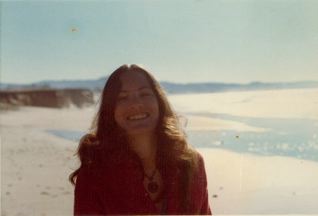 Left: Me, on the beach, at the time of the interview. Right: Pete Douglas
Left: Me, on the beach, at the time of the interview. Right: Pete Douglas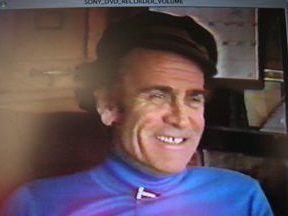
(Pete & I talked about the Miramar Beach Inn and how one owner closed the old bar and turned the building into an unsuccessful grocery store before it was again reincarnated as a bar/restaurant in the 1960s. From a tape transcribed by Linda Goetz, Coastside Secretarial).
Pete: Anyway, I’m drifting afar.
June: I just want to hear about it all. Feel free. No one seems to really know the chronological order of what happened on this street, Mirada Road. Where did you come from?
Pete: Los Angeles.
June: And what were you doing down there, before you came here?
Pete: I was brought to L.A. when I was 9-years-old, from Arizona, by my mother and stepfather. I went to part of elementary school and high school in California. As soon as I was old enough to get on a bike, I really called Hermosa Beach my “second home”. And, incidentally, that is where when I was old enough to sneak into a bar, at age 17, I went to hear jazz.
We ended the big band era in the late 1940s and started a movement of jazz again with small groups often taking over the back end of bars playing for nothing, if necessaqry, just to have a place to play…small groups, modern jazz in the back of bars–and there were always several Hermosa Beach bars, mainly the Lighthouse…
After the army, I went back to college, El Camino Junior College, in or near L.A., southwest L.A., near Inglewood.
When I finished college, I knew I had to get out of L.A. The smog and everything. This was the early 1950s. So I looked for any way to transfer to college up north. I made the first step to Santa Barbara. I transferred as junior to Santa Barbara in 1953 and graduated two years later in ’55.
June: And your major?
Pete: Sociology.
June: That’s my major, too.
Pete; What do sociology majors do?
June: They get lost.
Pete: That’s a crazy breed. Well, of course I didn’t find work in Santa Barbara. But then I had Linda (his first daughter) on the way. I had to get a job and on the bulletin board there was a job as an Assistant Field Director for the American Red Cross up in northern California. They ended up putting me at Travis Air Force Base, Vacaville. That’s how I moved down here.
Well, anyway, in the simmer of 1955 I graduated, went directly to Vacaville, lived there for a year-and-a-half, I think, and thought I was going to get a job in Marin. I had my eye on Marin County. I didn’t give a s— about the job; I was just trying to find the area I cared to live in.
And, you know, in Sausalito, you could have had a store front for a song. In the 1950s people were looking for interesting places. There was the Bridgeway and the vacant storefronts and I didn’t know what I was going to do with one of them.
I figured if I could get a job in Marin County then I would start working in Sausalito. Drum up something, i didn’t know what. But it didn’t pan out. The job didn’t materialize and I had moved to San Rafael.
Then I got a letter, word must have gotten out in the industry, and as usual the government was expanding and I got a letter from an administrator: ‘come and help us, saying he wanted to talk to me about a job.
I badly needed a job. The Red Cross was going to send me to Alaska, or quit. So that’s how I came to San Mateo County in early ’57. Came to this county, took the job as a probation officer.
Interview with Pete Douglas: Part I (1979)
Here’s the first installment of an interview I did with Pete Douglas (Bach Dancing & Dynamite Society at Miramar Beach) in June 1979. The Bach Dancing & Dynamite Society is a world class jazz house founded by Pete Douglas. The interview was taped and transcribed by Linda Goetz of Coastside Secretarial.
Pete: I called it the Ebb Tide Coffee Shop, the little building downstairs. But prior to that it was the Ebb Tide Cafe built about 1947 by Grandma Treadwell.
June: People just came here–like the Miramar used to be before it was remodeled?
Pete: No, the Miramar was built way back before Prohibition. Grandma Treadwell had her two sons built the Ebb Tide, back in 1946, ’47…they were going to build two stories and they built a foundation big enough for ten stories. There’s probably more beer and wine bottles in the concrete than concrete.
Anyway they got it built and they leased it. Far as I remember, that’s what I’m told. Not long after that Buster Westfalt’s mother–the Westfalt familys been out here a long time (ed. True. One of early Westfalts was a “diver” at Princeton Harbor). Buster’s mother opened up a taco place or something and, that was about in the 1940s. And then somewhere in the early 1950s the most colorful, successful owners of the place, was Gladys Klingenberger and her husband Gerald.
When they ran it, it was packed. But all they had was beer and (prohibition-style, even though it had ended long ago) Gerald kept whiskey under the counter. There was an old coke box sitting behind the bar where the beer was–and many times Gladys was passed out behind the bar. And people would come in to pick beer out of the coke box…and in the back room there was the gambling room….
And Gerald worked part-time as a cement worker so at the Ebb Tide you’d find cement workers, ex-cons–and you’d had to be prepared to fight your way out. It was a rough place to hang out. It was really a dive.
Later on when I was a probation officer, I checked the files, the sheriff’s files on this place–and there were dozens of “blue sheets”, calls for fights, burglary, assault with a deadly weapon.
When I bought the building, I inherited some hard oak clubs….and if you got tapped with one of those you were out cold–they were like getting hit with a piece of sttell. Oh man, the Klingenbergers had quite a reputation. And back then the Coastside was pretty wide open–you know what I mean, prostitution, gambling, whatever, so that’s why Gladys sold booze and beer.

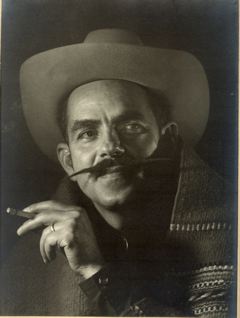 I
I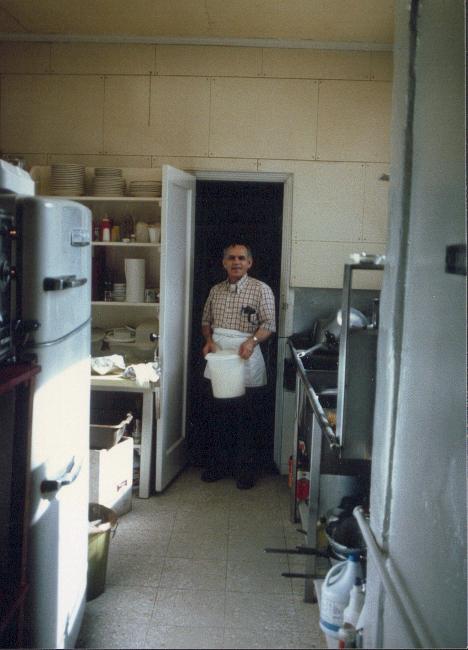
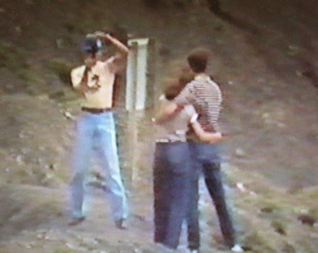
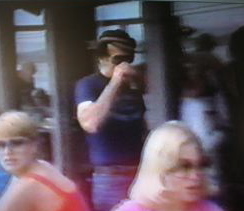
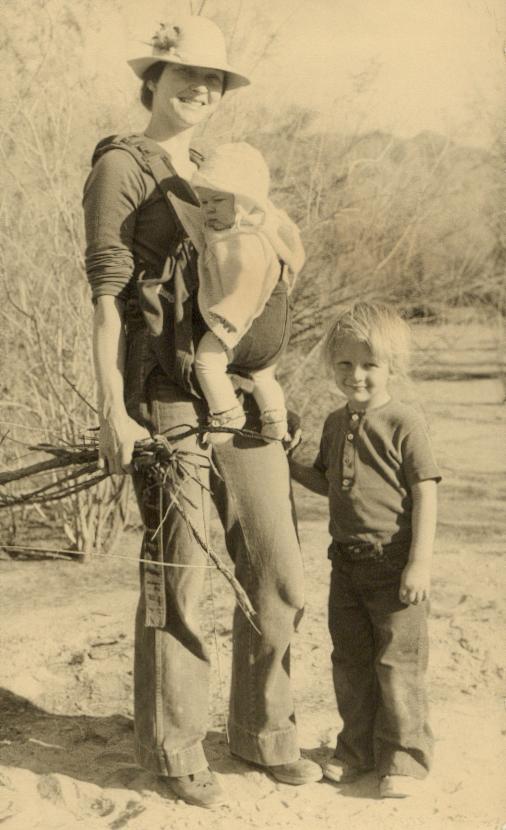
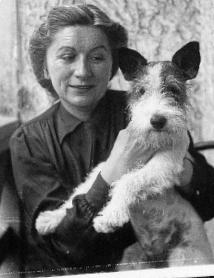
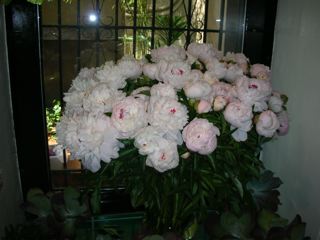 A vase of spectacular peonies.
A vase of spectacular peonies.